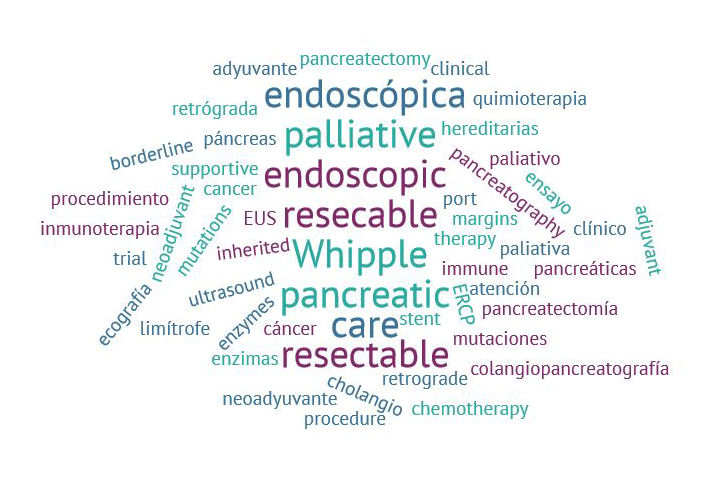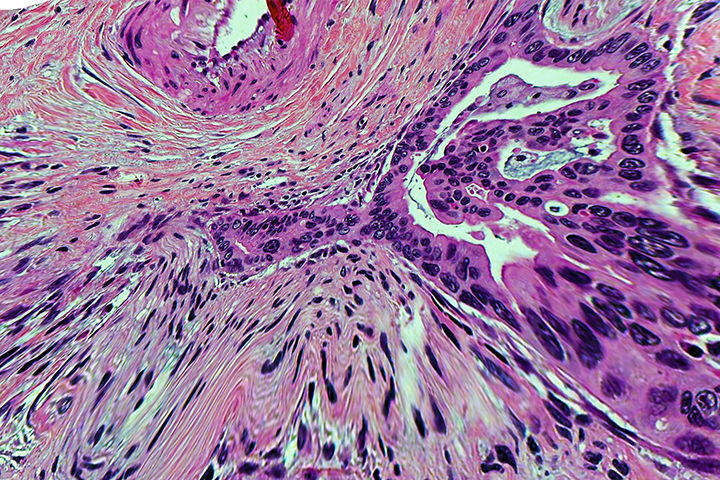Eighteen Important Words to Know if You Have Pancreatic Cancer

When you or someone you love receives a pancreatic cancer diagnosis, it can feel a bit like you’ve arrived in a foreign land.
The decisions you make are potentially life-changing and people all around you are speaking in terms you don’t understand. “It’s natural for patients and loved ones to begin reading everything they can about pancreatic cancer, and that’s a good practice,” Dr. Allyson Ocean, medical oncologist at NewYork-Presbyterian Hospital/Weill Cornell Medical Center in New York. “But often when they begin reading medical journals or talking to members of their health care team, they get lost fixating on terms they don’t know.”
One way to get a leg up on your new world? Learn the language. Here are 18 words you are likely to encounter, and where you might hear them.
Diagnostics
When you have cancer of any type, receiving the correct diagnosis is paramount. Unfortunately, the signs and symptoms of pancreatic cancer can be vague and can mimic other conditions. While most doctors start with a simple computed tomography scan (CT), the following tests are also often used for diagnosing pancreatic cancer. With these tests doctors can better see a tumor’s size and location, as well as obtain a biopsy.
1. Endoscopic retrograde cholangiopancreatography (ERCP)
ERCP combines X-ray technology with an endoscope—a thin, flexible, illuminated tube—to spot problems in the liver, pancreas, and bile ducts. Doctors place the tube down your throat and through the esophagus, stomach, and the duodenum (the first part of the small intestine). Then they pass a dye through a small tube into the scope to highlight the lower organs on X-ray.
2. Endoscopic ultrasound (EUS)
Like ERCP, EUS involves inserting an endoscope into the mouth and through the esophagus, stomach, and the duodenum. A small ultrasound probe at the tip of the tube emits high-frequency sound waves to capture detailed images of the chest, digestive tract, pancreas, bile ducts, and liver.
Treatment
When it comes to cancer treatment, you probably already know about radiation and chemotherapy. The following terms are also important for understanding pancreatic cancer treatment protocols.
3. Neoadjuvant therapy
The term “neoadjuvant” is used to describe treatment such as chemotherapy or radiation that is given before surgery.
4. Adjuvant therapy
Adjuvant therapy is treatment given after surgery.
5. Resectable pancreatic cancer
A cancer that is resectable means that the tumor lies within the pancreas or extends slightly beyond it. It’s resectable because it is free and clear of critical structures such as arteries and veins.
6. Borderline resectable pancreatic cancer
Tumors are given this classification if they are confined to the pancreas, but approach nearby structures. Doctors may not be able to remove the entire cancer without causing severe or debilitating symptoms.
7. Immunotherapy
Unlike chemotherapy and radiation, this unique form of cancer treatment harnesses the power of the immune system to fight cancer. There are different types of immunotherapy, including vaccines, monoclonal antibodies, and checkpoint inhibitors.
8. Stent
A stent is a small metal or plastic tube that doctors use to open a blocked duct. Doctors might place a stent in your pancreatic duct or your bile duct to help treat jaundice, or they might place one in the duodenum to treat sickness and restore your appetite.
9. Pancreatectomy
A surgical procedure where doctors remove all or part of the pancreas.
10. Whipple procedure
The Whipple procedure is an intense surgical procedure that involves removing part of the stomach, the duodenum, head of the pancreas, part of the bile duct, gallbladder, and lymph nodes in the area of the pancreas.
Other Relevant Terms
When you’re diagnosed with pancreatic cancer, you’re not only forced to learn terms related to the diagnosis and treatment of disease, but also those related to genetics, survival, and supportive therapies. Here are a handful of standouts.
11. CA 19-9
CA stands for carbohydrate antigen. Antigens are protein substances on the surface of cells that our immune system recognizes as a potential threat. CA 19-9 is a specific type of antigen that cancerous cells release into the bloodstream. This can serve as a marker of cancer activity. Elevated levels of CA 19-9 in the blood can sometimes be a sign of colorectal or pancreatic cancer. Higher-than-normal CA 19-9 levels are also linked to other conditions, such as gallstones, pancreatitis, and cirrhosis.
12. Clinical trial
A clinical trial is a type of research study that uses human volunteers to advance medical research. These trials not only investigate how safe and effective tests and treatments are, but in the case of pancreatic cancer, they may also offer the best chance for long-term survival.
13. Inherited mutations
Certain inherited changes, or mutations, can help explain why pancreatic cancer runs in certain families. About 10 percent of pancreatic cancers result from inherited mutations. Examples include familial breast cancer genes (BRCA1 and BRCA2), familial atypical multiple mole melanoma (FAMMM) syndrome, hereditary nonpolyposis colon cancer (HNPCC; Lynch syndrome), and Peutz-Jeghers syndrome.
14. Margins
Margins indicate the edge of the tissue removed during surgery for cancer. The margins are “clear” when there’s no evidence of cancerous cells at the edge of the tissue.
15. Minimal residual disease (MRD)
MRD means that there are only a very small number of cancerous cells left in the body after treatment—cells that can’t be seen even with a microscope.
16. Pancreatic enzymes
Pancreatic enzymes break down food so your body can absorb calories and nutrients. If part of your pancreas has been removed, or if the tumor is preventing the flow of pancreatic enzymes to the small intestine, you may not make enough enzymes to break down your food—a dilemma that affects about one-third of pancreatic cancer patients.
17. Port
A port is a small metal or plastic disc that sits under the skin and acts as an entry point for chemotherapy. A catheter (a soft, thin tube) connects the port to a large vein so your chemotherapy medication can be delivered seamlessly through a special needle that fits right into the port. Your doctor can also draw blood right through the port.
18. Palliative care
Palliative care focuses on improving your quality of life during all stages of treatment. This includes relief of symptoms of the illness and the treatment, help in understanding your disease and diagnosis, help meeting your treatment goals, and support in finding ways for you to to cope with your illness.






